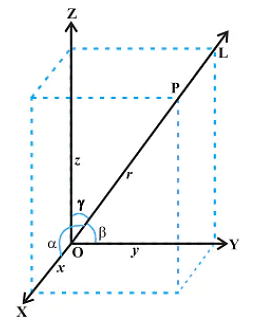ABC is an isosceles triangle with an inscribed circle with center O. Let P be the midpoint of BC. If AB=AC=15 and BC=10,then OP equals
- \(\frac{\sqrt5}{\sqrt2}\) unit
\(\frac{5}{\sqrt2}\) unit
- \(\frac{2}{\sqrt5}\) unit
- \(5\sqrt2\) unit
The Correct Option is B
Solution and Explanation
Given:
Isosceles triangle ABC with AB = AC = 15 and BC = 10.
O is the center of the inscribed circle.
P is the midpoint of BC.
We want to find the length of OP.
Step 1: Draw a diagram.
Draw isosceles triangle ABC with AB = AC = 15 and BC = 10. Draw the inscribed circle with center O. Since ABC is isosceles, the altitude from A to BC will bisect BC at point P. Thus, AP is the altitude and median to BC. Also, O will lie on AP. OP is the radius (r) of the inscribed circle.
Step 2: Find the length of AP.
Triangle ABP is a right-angled triangle with AB = 15 and BP = BC/2 = 10/2 = 5.
Using the Pythagorean theorem:
\(AP^2 + BP^2 = AB^2\)
\(AP^2 + 5^2 = 15^2\)
\(AP^2 + 25 = 225\)
\(AP^2 = 200\)
\(AP = \sqrt{200} = 10\sqrt{2}\)
Step 3: Find the semi-perimeter (s) of triangle ABC.
\(s = \frac{AB + AC + BC}{2} = \frac{15 + 15 + 10}{2} = \frac{40}{2} = 20\)
Step 4: Find the area of triangle ABC.
\(Area = \frac{1}{2} \cdot BC \cdot AP = \frac{1}{2} \cdot 10 \cdot 10\sqrt{2} = 50\sqrt{2}\)
Step 5: Find the inradius (r) of the inscribed circle.
The area of a triangle can also be expressed as \(Area = r \cdot s\), where r is the inradius and s is the semi-perimeter.
\(r = \frac{Area}{s} = \frac{50\sqrt{2}}{20} = \frac{5\sqrt{2}}{2}\)
Since OP is the radius of the inscribed circle, OP = r.
\(OP = \frac{5\sqrt{2}}{2} = \frac{5}{\sqrt{2}}\)
Therefore, OP = \(\frac{5}{\sqrt{2}}\) units.
Top Questions on Three Dimensional Geometry
- If A(2,1,-1), B(6,-3,2), C(-3,12,4) are the vertices of a triangle ABC and the equation of the plane containing the triangle ABC is $53x+by+cz+d=0$, then $\frac{d}{b+c}=$
- TS EAMCET - 2025
- Mathematics
- Three Dimensional Geometry
- If $(\alpha, \beta, \gamma)$ is the foot of the perpendicular drawn from a point $(-1,2,-1)$ to the line joining the points $(2,-1,1)$ and $(1,1,-2)$, then $\alpha+\beta+\gamma=$
- TS EAMCET - 2025
- Mathematics
- Three Dimensional Geometry
- If m:n is the ratio in which the point $\left(\frac{8}{5}, \frac{1}{5}, \frac{8}{5}\right)$ divides the line segment joining the points (2,p,2) and (p,-2,p) where p is an integer then $\frac{3m+n}{3n}=$
- TS EAMCET - 2025
- Mathematics
- Three Dimensional Geometry
- Let $\pi_1$ be the plane determined by the vectors $\hat{i}+\hat{j}, \hat{i}+\hat{k}$ and $\pi_2$ be the plane determined by the vectors $\hat{j}-\hat{k}, \hat{k}-\hat{i}$. Let $\vec{a}$ be a non-zero vector parallel to the line of intersection of the planes $\pi_1$ and $\pi_2$. If $\vec{b} = \hat{i}+\hat{j}-\hat{k}$ then the angle between the vectors $\vec{a}$ and $\vec{b}$ is
- TS EAMCET - 2025
- Mathematics
- Three Dimensional Geometry
Show that the following lines intersect. Also, find their point of intersection:
Line 1: \[ \frac{x - 1}{2} = \frac{y - 2}{3} = \frac{z - 3}{4} \]
Line 2: \[ \frac{x - 4}{5} = \frac{y - 1}{2} = z \]
- CBSE CLASS XII - 2025
- CBSE Compartment XII - 2025
- Mathematics
- Three Dimensional Geometry
Questions Asked in WBJEE exam
- Ruma reached the metro station and found that the escalator was not working. She walked up the stationary escalator with velocity \( v_1 \) in time \( t_1 \). On another day, if she remains stationary on the escalator moving with velocity \( v_2 \), the escalator takes her up in time \( t_2 \). The time taken by her to walk up with velocity \( v_1 \) on the moving escalator will be:
- WBJEE - 2025
- Relative Motion
A quantity \( X \) is given by: \[ X = \frac{\epsilon_0 L \Delta V}{\Delta t} \] where:
- \( \epsilon_0 \) is the permittivity of free space,
- \( L \) is the length,
- \( \Delta V \) is the potential difference,
- \( \Delta t \) is the time interval.
The dimension of \( X \) is the same as that of:- WBJEE - 2025
- Dimensional Analysis
- Which logic gate is represented by the following combination of logic gates?

- WBJEE - 2025
- Logic gates
- The variation of displacement with time of a simple harmonic motion (SHM) for a particle of mass \( m \) is represented by: \[ y = 2 \sin \left( \frac{\pi}{2} + \phi \right) \, \text{cm} \] The maximum acceleration of the particle is:
- WBJEE - 2025
- simple harmonic motion
- A force \( \mathbf{F} = ai + bj + ck \) is acting on a body of mass \( m \). The body was initially at rest at the origin. The co-ordinates of the body after time \( t \) will be:
- WBJEE - 2025
- Newtons Laws of Motion
Concepts Used:
Three Dimensional Geometry
Mathematically, Geometry is one of the most important topics. The concepts of Geometry are derived w.r.t. the planes. So, Geometry is divided into three major categories based on its dimensions which are one-dimensional geometry, two-dimensional geometry, and three-dimensional geometry.
Direction Cosines and Direction Ratios of Line:
Consider a line L that is passing through the three-dimensional plane. Now, x,y and z are the axes of the plane and α,β, and γ are the three angles the line makes with these axes. These are commonly known as the direction angles of the plane. So, appropriately, we can say that cosα, cosβ, and cosγ are the direction cosines of the given line L.
